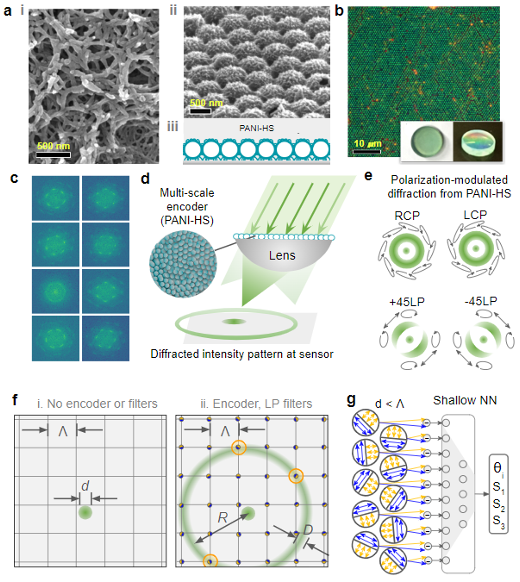High-Speed, High Field-Of-Field Of View Hybrid Polarimetric Camera With Compressive Sensing
Full Description
Background
Polarimetric imaging is valuable when there is not enough contrast between the target and the background. Most commercial, polarization cameras only perform linear polarization imaging because the circular polarization component (S3) is more difficult to measure. The measurement of S3 requires imaging systems that have moving parts or need bulky optics. There is a strong need for an inexpensive, high-speed, full-Stokes polarimetric camera.
Technology
Combining the approaches associated with speckles, metasurfaces and computational imaging, Prof. Luat Vuong and her team have developed and demonstrated a low-cost, single-shot, non-coaxial full Stokes imaging system. The system comprises of simple hardware and shallow neural networks. The hardware consists of a metagrating film, a charge-coupled device (CCD) and a conventional lens. In this system, the film is an encoder that differentiates linearly polarized light as well as right- and left-handed circularly polarized light. The film is composed of polyaniline with hollow spheres (PANI-HS).

(a-d) Multi-scale, meso-ordered material, which enables (d-e) spatial multiplexing of multiple beam components. (f-g) information theoretic analysis and shallow neural networks to achieve compressed sensing of beam polarization.
Advantages
The novel and significant benefits of this technology are:
- Low-cost, scalable manufacturing. The PANI-HS does not required advanced fabrication facilities and can be inexpensively fabricated over large, curved and flexible surfaces.
- Wide field-of-view polarimetric sensing (~ 150 degrees)
- Simple and compact imaging system that is inexpensive, and has no moving parts
- Does not require a polarized sensor array or multiple measurements (single shot)
- Compressed sensing and simultaneous sensing of polarization degree and direction
- Usage of sparse sampling and simple back-end algorithms enables high-speed and more robust camera-like imaging
- Non-line-of-sight full-Stokes imaging
Suggested uses
Applications, including imaging, are:
- Underwater imaging
- Remote sensing
- Polarized channel marking
- Polarized lidar
- Biomedical imaging
- Detection of surface features
Inventor Information
- Please review all inventions by Luat and her team at UCR
- Please visit Luat's group website to learn more about their research
- Please read recent press coverage of Luat at UCR
Related Materials
Patent Status
| Country | Type | Number | Dated | Case |
| United States Of America | Issued Patent | 12469243 | 11/11/2025 | 2023-975 |
Contact
- Venkata S. Krishnamurty
- venkata.krishnamurty@ucr.edu
- tel: View Phone Number.
Other Information
Keywords
bio-inspired, biomimetic, polarization, polarimetric camera, wide field of view, coded diffraction, coded aperture, hybrid imaging, Stokes measurement, object marking, polarimetric sensing, multi-scale structures, hyperspectral imaging
